Xiaomi Poco X6 Pro Review: Slightly Faulty Powerhouse
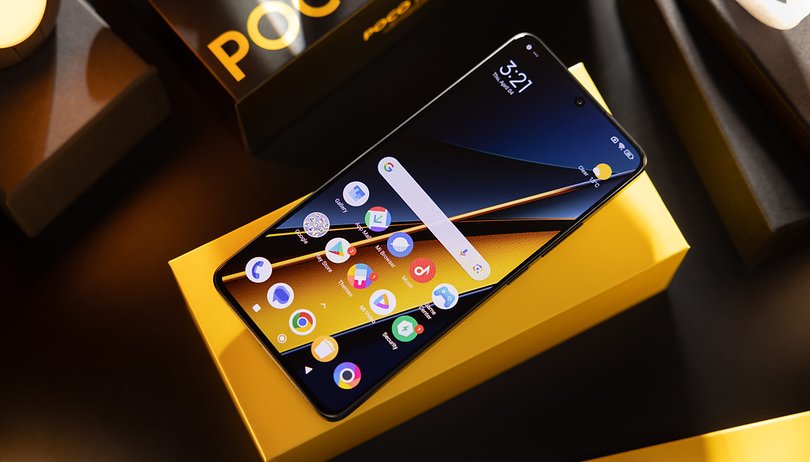

Is the Poco X6 Pro the performance miracle worker that costs less than $400? If so, what else does the 6.7-inch HyperOS-powered smartphone with an AMOLED display and 64 MP main camera have to offer? That's exactly what we intend find out in our detailed review.
Good
- Very good price-to-performance ratio
- Powerful processor
- Great display
- Already with HyperOS/Android 14
- Long software support
- Good battery life
Bad
- Camera system is only average
- Lots of bloatware
- No microSD support
- No 3.5 mm audio jack

In a nutshell
The Poco X6 Pro is a real performance heavyweight thanks to the powerful MediaTek Dimensity 8300 Ultra that powers the device. It also scores points with up to 512 GB of storage, a beautiful display, and a good battery life. I'm not completely impressed by the camera, although the 64 MP main camera delivers good results, especially during the day. You might miss a microSD slot or the 3.5 mm audio jack.
While we're nitpicking, the device is only splash-proof with an IP54 certification. It also offers Wi-Fi 6 instead of 6E or even 7, and you cannot charge it wirelessly. Honestly? Given the price, that's absolutely acceptable. After all, you're also getting a smartphone with HyperOS/Android 14, which promises three major Android upgrades all the way to Android 17 and four years of security patches.
You can currently buy the phone for just over $300 in the entry-level 8 GB RAM / 256 GB storage variant. The larger variant (12 GB/512 GB) is currently available for just under $380. If you are looking for a decent mid-range smartphone, you should act quickly if you want to save money.
Design and display
The Poco X6 Pro shines with a really beautiful 6.67-inch AMOLED display that features a 120 Hz refresh rate. In general, the well-constructed smartphone also boasts a pleasing design. You also do not need to deal with a fat camera hump which is often present on cheaper Xiaomi smartphones.
Pros:
- Impressive AMOLED display with a 120 Hz refresh rate.
- Good workmanship.
- Flat camera island = no tilting on the table.
- Reliable, fast fingerprint sensor in the display.
- A protective case is included.
Cons:
- "Only" IP54-certified.
- Weaker Gorilla Glass than in the Poco X6.
- No microSD slot.
- No 3.5 mm jack.
- Liberal use of plastic, making this a fingerprint magnet.
Compared to the similarly equipped Xiaomi Redmi Note 13 Pro+ (review), the design of the Poco X6 Pro is somewhat inferior. While you get a robust Gorilla Glass 5 installed in front, the Redmi competition and even the base Poco X6 model come with the stronger Gorilla Glass Victus.
The back and frame are made of plastic and in the black model we reviewed. The back cover qualifies as a fingerprint magnet. Fortunately, a protective case is included in the packaging. This not only makes the smartphone more durable, but also keeps fingerprints at bay.
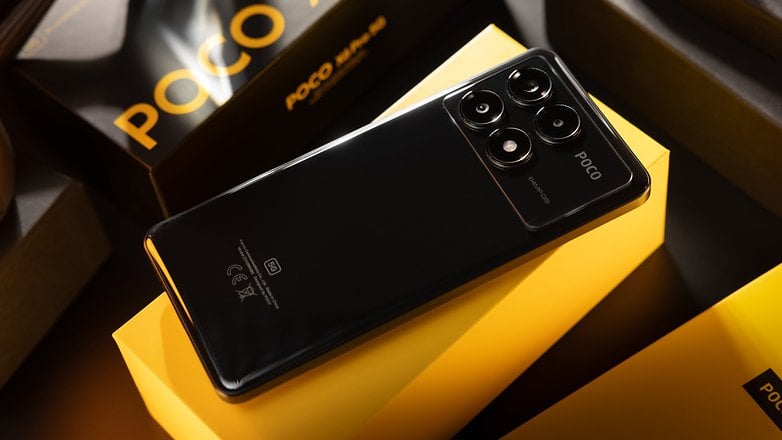
The 186 g lightweight Poco X6 Pro (there is also a variant that sports vegan leather which is 4 g heavier and slightly thicker) is comfortable to hold, which could also be due to the rounded back on all sides. Another plus point? Many of the cheaper Xiaomi models come with a fat camera hump, which not only looks unattractive, but also tilts unpleasantly when you place it on the table. This is not the case with the Poco X6 Pro, as the camera system only protrudes a few millimeters.
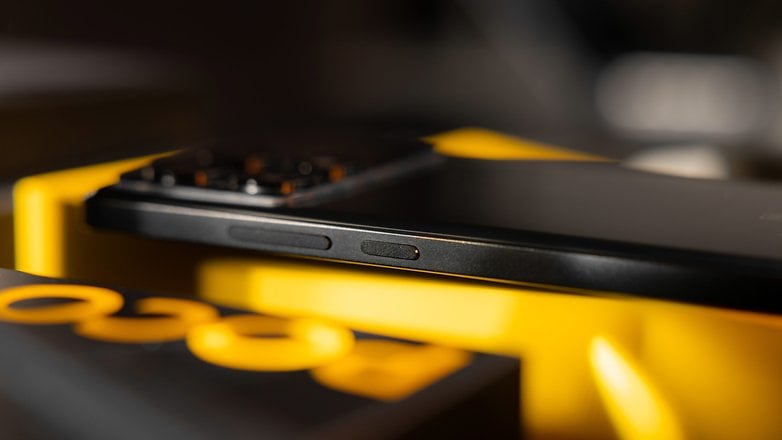
I only have good things to say about the display. The 6.67-inch panel is pleasantly bright (1,200 cd/m² HBM brightness, peaking at up to 1,800 cd/m²), the colors are brilliant thanks to AMOLED technology, with a 120 Hz refresh rate. The default setting is a variable refresh rate between 60 and 120 Hz, but you can also choose one of the two rates. Bear in mind that 120 Hz naturally looks better, but also drains the battery more.
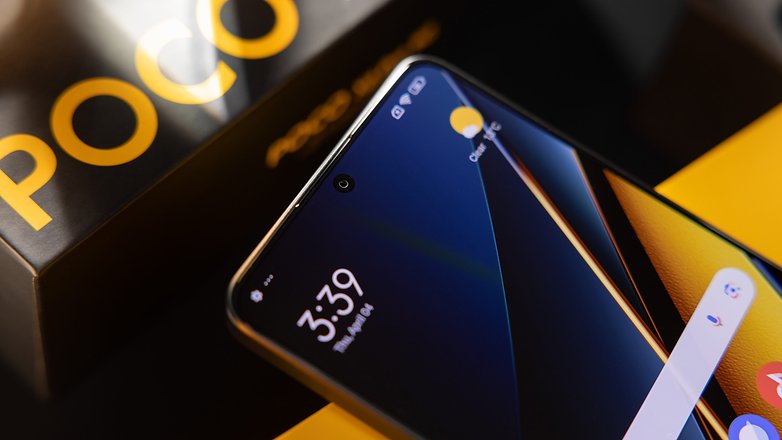
The Always-on Display is more of a sometimes-on display. Personally, it doesn't bother me because a tap on the display is enough to activate it, but I wanted to mention this.
Xiaomi has repositioned the fingerprint sensor to the bottom of the display, where it is slightly too low for me. However, it works as intended: It unlocks your smartphone quickly and also very reliably. In fact, I would venture and say it is even more reliable than my current experience with the Galaxy S24 Ultra (review), just as an aside.
Xiaomi Poco X6 Pro software
In contrast to the base model (MIUI 14 based on Android 13), the Pro model already runs on HyperOS and Android 14. There is quite a lengthy software support for a device in this price range (3 major Android updates and 4 years of security patches), but you have to live with a slew of bloatware.
Pros:
- HyperOS based on Android 14.
- Decent update policy.
Cons:
- Endless amount of bloatware.
Hello HyperOS! Nice to meet you. And thank you for looking almost exactly like MIUI, which makes the transition particularly easy. So yes: while the Poco X6 has to make do with MIUI 14, here we see Android 14 in its HyperOS guise. However, let's not kid ourselves: Those who are at home with the Xiaomi operating system won't notice any major differences.
- Also works with HyperOS: How to master MIUI on your Xiaomi smartphone
If you're a long-time Xiaomi user, you won't be put off by the story of the bloatware ghost that has struck once again on the Poco X6 Pro. I counted a total of 26 apps, which you can easily remove.
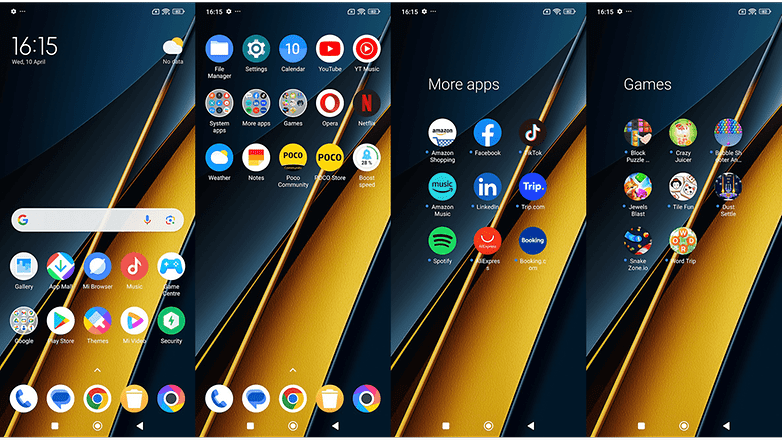
I did not run into any teething problems with HyperOS, the system runs smoothly and reliably. It's also nice to see how Xiaomi improved support for cheaper models. In other words, you can be sure of three major Android updates and four years of security updates. This even ensures Android 17 will debut on the Poco X6 Pro, making it a reasonably future-proof option for you. Incidentally, the currently installed security update dates back to February.
Performance and connectivity
The Poco X6 Pro is powered by a powerful SoC, the MediaTek Dimensity 8300 Ultra. It also comes with 8 or 12 GB of RAM and 256 or 512 GB of storage. This makes the X6 Pro a real powerhouse in its price range.
Pros:
- Superior, stable flagship level performance.
- No overheating issues.
- Bluetooth 5.4 supported.
Cons:
- No eSIM support.
In the mid-range market, we sometimes have to live with the fact that apps take a little more time to launch, everything doesn't run quite as smoothly and we prefer to use the lower graphics settings when gaming. You can forget all that with the Poco X6 Pro. Everything works really fast, gaming is a real pleasure because you hardly have to make any compromises, and best of all: I didn't notice any excessive heat development even during my obligatory 30-minute round of Genshin Impact.
The Dimensity 8300 Ultra from MediaTek used here was manufactured using the 4nm process and is not only powerful but also efficient. "Flagship-level performance" is not just an empty phrase in this case, but a more than solid statement about what mid-range smartphones can offer in 2024.
We already attested to the flagship-level performance of the Poco F5 in our review with its Snapdragon 7+ Gen 2 SoC. The situation is similar with the Poco X6 Pro, which runs circles around competitors such as the Redmi Note 13 Pro+ 5G or the new Samsung Galaxy A55 (review) in terms of performance. In addition to the following overview of the benchmark tests, the result of the normal Wild Life test was "Maxed Out", while the Poco X6 Pro completed the Solar Bay test course with 4,854 points (Solar Bay Stress Test: 4,899/33.08 points).
| Poco X6 Pro (Dimensity 8300 Ultra) |
Redmi Note 13 Pro+ 5G (Dimensity 7200 Ultra) |
Poco F5 (Snapdragon 7+ Gen 2) |
Galaxy A55 (Exynos 1480) |
Google Pixel 7a (Tensor G2) |
|
|---|---|---|---|---|---|
| 3DMark Wild Life Stress Test |
Best loop: 7,559 Worst loop: 7,518 |
Best loop: 4,306 Worst loop: 4,276 |
Best loop: 7,632 Worst loop: 7,582 |
Best loop: 3,951 Worst loop: 3,940 |
Best loop: 6,590 Worst loop: 4,980 |
| Geekbench 6 | Single: 1,356 Multi: 4,228 |
Single: 1,107 Multi: 2,685 |
Single: 1,107 Multi: 4,232 |
Single: 1,155 Multi: 3,404 |
Single: 1,417 Multi: 3,549 |
| PCMark Work 3.0 | 12,682 | 12,230 | 14,335 | 13,477 | 10,532 |
Let's also briefly mention the connectivity options and other hardware aspects: You have the option of purchasing the 8 GB RAM and, 1256 GB storage combo. Alternatively, there is also a 12 GB/512 GB model. We received the higher capacity model for our review. What's nice about the memory? While the Redmi Note 13 Pro+ still ships with UFS 3.1 memory, UFS 4.0 is used here. The same also applies to the Bluetooth standard, where the Poco X6 Pro is ahead of the competition with Bluetooth 5.4.
Wi-Fi 6E or even 7 is not supported, but "only" Wi-Fi 6, but that's nitpicking at a high level and I won't hold that against Xiaomi in this price range. I'm also not sure whether I should complain about the fact that we can't insert a microSD card or a 3.5 mm jack into the device. The 256 GB of storage space and the variety of available Bluetooth headphones. The only thing I found to be a bit of a shame is the lack of eSIm support.
Xiaomi Poco X6 Pro camera
The triple camera system is led by a decent main sensor with 64 MP, against which the other two fall short. It takes good photos during the day, but the main camera is also not that great at night.
Pros:
- Decent 64 MP main camera with OIS.
- Reliable portrait mode.
Cons:
- Ultra-wide angle camera is rather mediocre.
- 2 MP macro? Come on, Xiaomi…
Let's get down to business right away: The Poco X6 Pro is not my top recommendation as the best camera phone, other mid-range models can do this better. This includes in-house models such as the Redmi Note 13 Pro+ or even the Poco F5 (review).
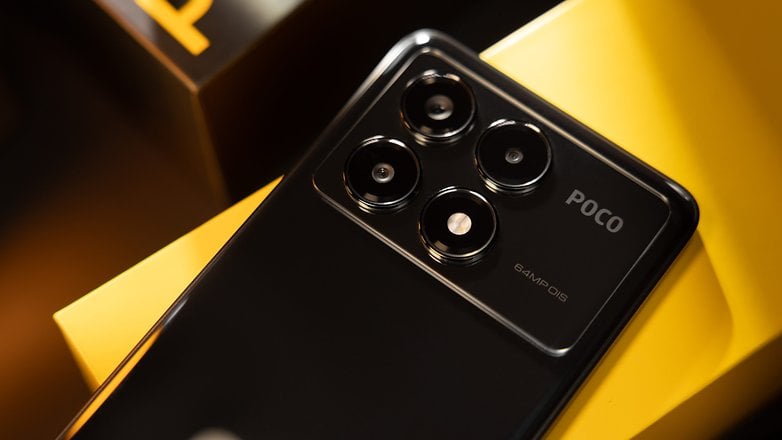
As is so often the case, the main camera, and in this case, Samsung's OmniVision 64 MP sensor, is exactly what we often have to live with in mid-range smartphones: During the day, especially in good weather/light conditions, you can capture really decent photos with the main camera, but at night, things become much more difficult.
However, while good photos can still be taken on occasion with the automatically activated night mode, the 8 MP ultra-wide angle camera doesn't impress me during both the day and at night. I disregard the third camera, a 2 MP macro shooter, as a joke.
Before I rant on for too long, perhaps you should take a look at the gallery. There, you can see that the camera is really fun to use in good weather, even if the colors are too strong for me. Yes, the sky was blue, but it was not really that blue.
You can also see how the ultra-wide angle photos also show the colors a little too aggressively and that some details are lost in certain sections. This is even more stark in poor light conditions, and it makes no sense to switch to the ultra-wide angle sensor. The 2x digital zoom, on the other hand, is safe to use.
For the sake of completeness, the front shooter for selfies should also be mentioned. With 16 MP, you can take average-looking selfies. Somehow I can't see any positive or negative effects. In portrait mode, however, the subjects are usually very well separated from the background.
When I consider that we can currently buy the Poco X6 Pro for just over $300, the camera is fine for me overall — at least for the main camera. However, photo enthusiasts will also find significantly better camera options in the mid-range market. Take a look at our sub-$500 smartphone camera blind test. If camera performance are much more important to you than performance, for example, you should take a look at the Galaxy A55 or even more so the Google Pixel 7a (review).
Xiaomi Poco X6 Pro battery
The key battery data for the Poco X6 Pro? 5,000 mAh, fast charging with 67 W, with an included charger. Unfortunately, wireless charging is not supported.
Pros:
- Good battery life.
- Fast charging at 67 W.
- Charger is included.
Cons:
- -
Do you want to take a stab at Samsung: Are you serious? Are you saying that you couldn't do that if you wanted to? Yes, Xiaomi packs a 5,000 mAh battery into its mid-range device, just like the South Koreans. However, Xiaomi also includes a charger in the packaging, and what's even better: this charger also charges quickly—at 67 watts in this case.
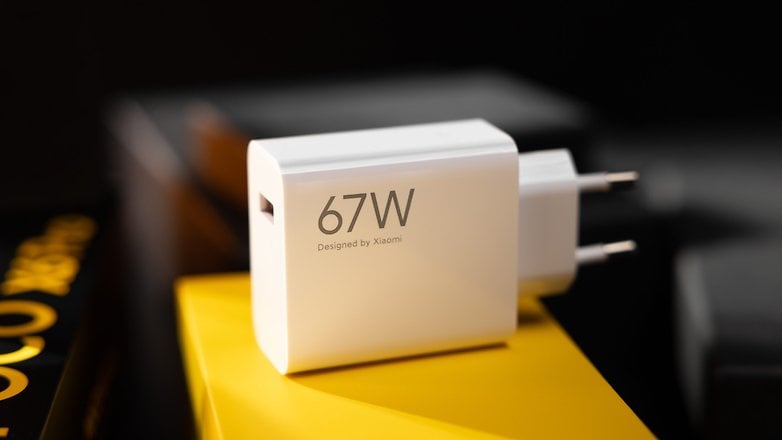
What does this mean for us? The handset is fully charged in around 45 minutes. Xiaomi is also slowly letting me bid goodbye to the often-repeated "it'll get you through the day" phrase. This is Because if you're out and about with the Poco X6 Pro and don't use your cell phone excessively, you can easily manage two days.
The battery test by PC-Mark confirms my opinion of the battery: 13 hours and 18 minutes is a decent value, and the measured temperature did not even exceed the 35-degree mark apart from the start.
Is there anything to complain about? Not really. Yes, there is no wireless charging support or even wireless reverse charging here, but this is not common in this model segment either. You have to cut corners somewhere if you want to offer such a powerhouse for less than $400.
Xiaomi Poco X6 Pro technical specifications
| Technical specifications | |
|---|---|
| Device | |
| Picture |  |
| Price (RRP) |
|
| Display |
|
| SoC |
|
| Memory |
|
| OS |
|
| Camera |
|
| Selfie camera |
|
| Battery capacity |
|
| Connectivity |
|
| IP certification |
|
| Dimensions and weight |
|
Conclusion
Yes, the Poco X6 Pro is fun, even if it does have some weaknesses. This is actually par for the course, as smartphones priced below $400 inevitably have to make compromises here and there. In this case, Xiaomi fully focused on performance and ensures gamers can have fun with the device without any worries. However, if your main focus is on the camera, you should take a look at our gallery to be on the safe side and perhaps look at other models as an alternative.
If you're not constantly connected to your smartphone, the battery can even last for two days without a power outlet. Thanks to the 67 W charging speed, you can have a few hours of use with just ten minutes of charging time. The display is excellent, I like the design and I don't mind the fat camera bump. 5G support? That's logical! The device is only splash-proof, which is a shame, but IP68 is anything but an extra at this price point.
Here is a brief summary of my conclusion: The performance is flagship level and even with the absence of a microSD slot and a 3.5 mm jack, the Poco X6 Pro behaves like a flagship. If you can overlook small weaknesses and are not an avid photographer, you will be thrilled with the Poco X6 Pro. With good software support, this will hold you in good stead all the way for the next 3–4 years. Hurry, because Xiaomi is slashing the already tempting price down even further on its website!











































